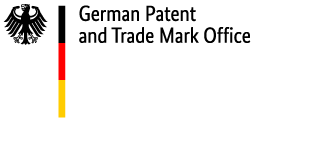Content
DPMA Annual Report 2018: German carmakers innovative in internal combustion engines and electric drives
German Patent and Trade Mark Office provides information on technology trends, application procedures and its digital services
Press release of 31 May 2019
Munich. Technology trends, information on the trade mark procedure, current statistics: Today, the German Patent and Trade Mark Office (DPMA) has published its Annual Report 2018 on the Internet. Among other things, the Annual Report sheds light on the innovative capacity of the automotive industry, on digital transformation and on the participation of women in technical innovation in Germany. It also offers useful guidance on trade mark examination procedures and information on the e-government services offered by the federal office. The printed version of the report is expected to be available by the end of June.
An analysis published by the DPMA in its Annual Report shows that German car manufacturers dominate the domestic innovation landscape in terms of drive technology: Almost half (47%) of all patent applications for internal combustion engines with effect for Germany, published by the DPMA and the European Patent Office in 2018, were filed by German companies. For electric drives the share was 39%, for hybrid drives still 36%. In 2018, the two offices published a total of 4,052 patent applications with effect for Germany relating to internal combustion engines; 3,168 applications related to hybrid drives and 459 to electric drives. "The undiminished great innovative capacity of German manufacturers in the various drive technologies is very encouraging. This shows that the development of recent years is continuing," DPMA President Cornelia Rudloff-Schäffer said.
Digital transformation in patent applications: smart home, smart factory
An issue that is increasingly changing the work and examination areas of patent offices is digital transformation. In the technology fields of communication technology, semiconductors, data processing and audiovisual technology, the DPMA and the EPO published a total of 21,050 patent applications with effect for Germany in 2018. Digital communication technology accounted for the largest number (10,902). Applications for what is known as the Internet of Things, over which machines and devices in houses and flats (smart home) or in industry (smart factory) communicate with each other, are becoming increasingly important. Especially in the field of computer technology, the number of unpublished patent applications received by the DPMA only last year showed a huge leap: In this technology field, which also covers a large part of developments in artificial intelligence, almost a quarter more applications than in the previous year were received. "The extent of the digital transformation can also be seen from the diversity of the applicants: These include large corporate groups, but also small and medium-sized enterprises from different sectors," DPMA President Rudloff-Schäffer said.
In addition to current technology trends, the Annual Report 2018 of the DPMA contains interesting stories and useful information on patents, utility models, trade marks and designs: Did you know that only just over six percent of inventors in Germany are women? Or that the “Lufthansa” crane turned 100 last year? In an extensive statistics section you can read, among other things, which federal Länder are leading in Germany in patent, utility model, trade mark and design applications and which companies are the top applicants.
The German Patent and Trade Mark Office
Inventiveness and creativity need effective protection. The DPMA is the German centre of expertise for all intellectual property rights – patents, utility models, trade marks and designs. As the largest national patent office in Europe and the fifth largest national patent office in the world, our office stands for the future of Germany as a country of inventors in a globalised economy. Its staff of over 2,600 at three locations – Munich, Jena and Berlin – provide services for inventors and companies. They implement federal innovation strategies and develop the national, European and international protection systems further.
Last updated: 10 December 2025

Not only protecting innovations
Social Media